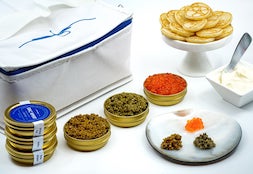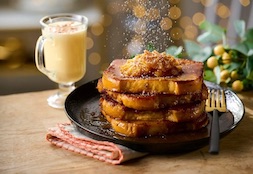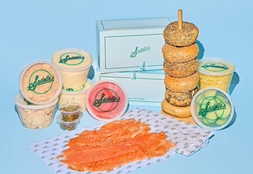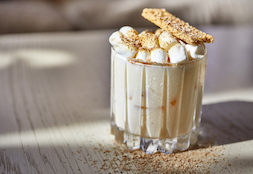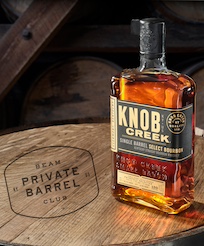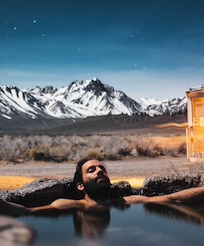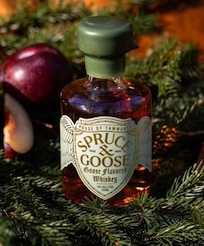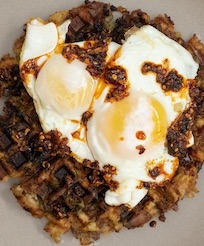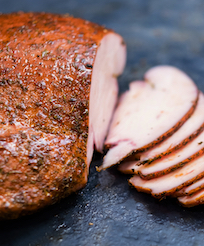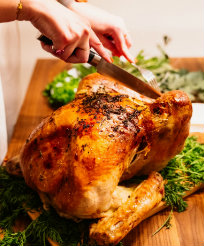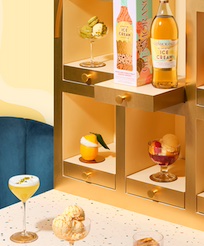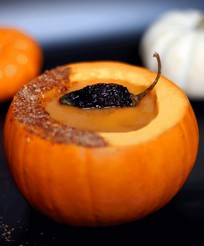It’s easy to scoff at a list that dares to call itself “The World’s 50 Best Bars.”
In the era of Yelp and TripAdvisor and Buzzfeed and this very website (and every website remotely like it), hyperbole has emerged as a lingua franca for quasi-definitive rankings of every imaginable thing. The word “best,” a barbed term, has been dulled by repetition. Indeed, to create a “best-of” list today is in some ways a futile exercise: you want it to mean everything, of course, but often it means almost nothing at all.
And yet, the World’s 50 Best Bars list still means something. Here, it might be instructive not to think of it as a best-of list at all, but, as its Group Editor, William Drew, told me, “a reflection of the global bar scene each year, a snapshot of opinion,” formed from the votes of approximately 510 anonymous “experts”—premier bartenders, cocktail aficionados, drink writers and the like.
Published by William Reed Business Media, the institution is heading into its 10th year. Though the 2019 list won’t be announced until October, an anniversary celebration of sorts is taking place in New York Tuesday, during which six world-renowned bar owners and bartenders—including local favorites, like Jillian Vose of The Dead Rabbit (pictured above) and Jim Meehan of Please Don’t Tell—will gather to discuss the future of the industry. (A cocktail party—a very enviable one, at that—will follow.)
Before traveling from London to New York for the event, I caught up with Drew, a longtime journalist and editor who’s worked on the list for the last two and a half years, to find out how they put it together, what it tells us about the industry and why it’s more relevant now than ever.

First off: what exactly do you do as the Group Editor of the World’s 50 Best Bars? Is it a year-round job?
Yeah, it is. I’m responsible for how we create the list. The list is created from the votes of over 500 experts around the world, and we use our network of trusted sources from all over the world to put together an ever-evolving list [of experts]. It evolves every year in terms of the balance of people in different parts of the world. Of course, people change jobs, and we’re constantly looking at who we think are well-qualified experts, and we want to rotate that list so that there’s a significant change each year in the make up of [the voters]. Then we ask them to vote on the seven best bars they’ve been to in the past 18 months.
We also create content across our digital channels, in the way a magazine does, but it’s focused around the best bars in the world what they’re doing, who’s doing what and why. We obviously have a close relationship with premier bars around the world, in order to get that content and in order to bring them together for events, the main event being the World’s 50 Best Bar Awards each year, which takes place in October. It happens in London.
[Ed. Note: William Reed also publishes the list of bars ranking from 51-100.]
How do you go about recruiting these experts, and what are you looking for from them? Also, how conscious are you guys of trying to curate a diverse list of voters?
There are broadly three categories of voters we recruit. The first is bartenders themselves. The premium bartenders from around the world who often travel as part of their work, we ask them to be judges, and we try to get a balance geographically, so we’ll have a certain number in North America, South America, etc. We have an informal network of key people in different territories who put forward names, because they’re closer to the industry in [those places].
The second category is media, so drink writers, especially, if you get the opportunity to travel as a food/drink writer, then you might be asked to be a voter.
And the third category is what we refer to as “cocktail aficionados.” It may be a consumer, it may be someone who just loves cocktails and who has the opportunity to travel around the world a lot and has become an expert through experience and knowledge. They may be connected to the industry through other means—they may be a chef, for example, or they may be a brand ambassador.
What exactly are the voters sending you? Is it just the names of those seven bars?
We ask them to send an explanation of why they’ve chosen those bars as well, we ask them to give the date that they’ve been to that bar so we can verify necessary drinks in that bar, and guarantee that they don’t have a financial interest in that bar. We have to insure that there are bars outside of their own territory as well, so they have to vote for some that are not in their home city or country. [Ed. Note: a minimum of three, to be exact.] But other than that there are no criteria, in the sense that we don’t ask them to mark any specific categories when they go to judge it. We ask them to simply choose the seven best bar experiences they’ve had in the previous 18 months. We feel that gives them the freedom to create a very diverse list.
Of course it’s up to each person, but with the collation of 500 experts we think that creates a list that’s a reflection of the global bar scene each year, a snapshot of opinion, if you like. And it creates a sense of excitement, you know, a sense of something for people to aim for, so there’s an aspirational element. Crucially, we bring those people together over several days, usually at these events themselves, to create a sense of community, shared knowledge, shared experiences...it’s kind of a thought leadership platform, for people to talk about how we can move things forward, how the industry can improve, how the experience as consumers can improve, what we need to change, how we can make it more inclusive, more diverse, so on and so forth...
This year being the 10th anniversary, can you speak to any significant industry trends you’ve noticed based on the makeup of the lists?
I think the diversity on the list is one of it’s greatest strengths. No one type of bar dominates the list. There’s every type of bar from all over the world. We’ve undoubtedly seen a major focus on sustainability and low-waste or no-waste ingredients. We’ve seen a greater focus from a lot of bars on locality...a sense of place both in terms of the drink creation and the bar itself, rather than being a facsimile of a great international bar that could be in any city. Many of the bars on our list are rooted in their location, and increasingly using their location as a base for their sourcing, whether it be in terms of brands or the additional elements that go in their drinks—herbs, spices and so forth.
I think people are trying to put a lot more fun into these bars as well. There might‘ve been a period where people were taking their drinks extremely seriously, which they still do of course, but at the expense of having a good time at the bar.
Over the past few years, were there any bars in particular that you were surprised to see make the list?
I wouldn’t want to pick out any one, in particular, but I would say geographically it’s fascinating when you get bars that are outside of the big cities, or outside of the established centers of the cocktail drink world. So there’s still a huge number of bars in New York and London on this list, and they remain the epicenters of the bar industry in many ways, but then you see the rise of great bars in Singapore, Hong Kong, Bali, Thailand, and recently in South America, we’re seeing more bars from Argentina, Brazil, Central America...these bars are rising in terms of their profile globally and they’re brining a different spirit—no pun intended—to the bar scene.
There’ve been some great Asian bars, which increasingly have their own identity, versus taking on what might be called a “Western identity” and transferring that to a bar in Hong Kong or Singapore or Tokyo. It’s much more about owning their own identity for those bars now.
[Ed. Note: William Reed has been publishing an Asia's 50 Best Bars list since 2016.]
To the extent that there’s criticism of the list, what kind do you tend to receive?
I think with any ranking there’s always going to be controversy. But what we would focus on is that no one person’s list of bars is going to be the same as another’s. Yours and mine would be completely different. Neither of us are wrong. But [the list] is a device for celebration, it’s a device for promoting the bar industry as a whole. It’s also a device to guide and help consumers who are traveling around the world.
There are so many lists out there now—way more, even, than back in 2009. Do you think more people are looking for an “authoritative” list now versus back when you guys started?
I think people are traveling driven by food and drink more than ever, so of course they want those guides. And one of the unique aspects of this list is that it is global. Of course you can go to any city and get a local guide to that city and that might be comprehensive. But our list is different in that it covers the whole world in one go and it’s really the best of the best. The bars who get on it have to be pretty special. We hope you’re guaranteed a memorable experience at any of these bars, whether it be number one or number 50.
I’m curious whether you think the rise of Instagram, which is way more ubiquitous now than it was 10 years ago, has changed the makeup of the list. From personal experience as a food/drink writer, it seems like so many bars or restaurants are creating dishes or drinks that are obviously meant to be consumed, but are also expressly designed for Instagram.
I would say the means of marketing your bar or restaurant has changed, and that social media is undoubtedly a key source in terms of launching yourself up as a bar. If you’re creating a great dish or a great drink that’s Instagram-friendly, then that’s going to help you get attention.
However, people are still going to have to come to your bar and enjoy the experience in order to get the votes. They can’t vote based on a picture they see on their phone. They might go to a bar based on the pictures they see on their phone, but then it’s got to deliver. And that drink not only has to look beautiful, but it’s got to taste good, and the bar has to have a grand atmosphere, and the service has to be great...all those things still stand. So for me the social media element is more of a marketing aspect. Ultimately, you still have to deliver, whether it be a great meal or a great bar experience. Our experts are discerning enough to understand that. They know they’re voting on the real thing, not just the image.
What do you think is going to be the next big thing for bars?
As I mentioned earlier, an element of fun and hospitality and customer focus is really coming back as a major element. And tied in with that, the idea of prepping cocktails, and pre-batching not being a negative element now, because it means you can get the drinks out faster. I think in the past that might not have been the case. Now a lot of the top bars are working on how they can maintain the quality of those drinks with their extensive preparation and techniques and so on, so they can get those drinks out relatively fast, which makes the customer experience that much better. That’s a bit of a technical one, but it’s significant in that it’s combining back of bar innovation with a great experience as a consumer.
This interview has been lightly edited and condensed for clarity.


